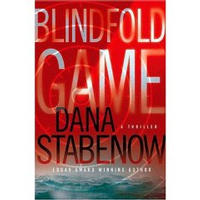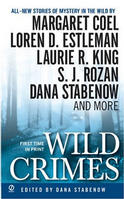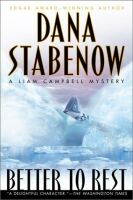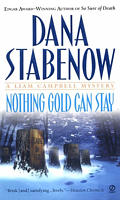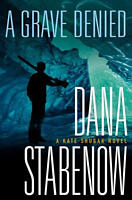
A Grave Denied
Minotaur Books
Mystery
September 1, 2003
ISBN-13: 0312306814
Available in: Hardcover
A Grave Denied
by Dana Stabenow
Everyone knew Len Dreyer, a handyman for hire in the Park near Niniltna, Alaska, but no one knew anything else about him. Even Kate Shugak hired him to thin the trees on her 160-acre homestead and was planning to ask him to help build a small second cabin on her property for Johnny Morgan, a teenaged boy in her care. But she, the Park's unofficial p.i., seems to have known less about him than anyone. Alaska is a place where anybody can bury his history and start fresh, and for any reason, but this particular mystery comes to light when Len Dreyer turns up murdered. His body is discovered, frozen solid, in the path of a receding glacier with the hole from a shotgun blast in his chest. No one even knew he was missing, but it turns out he's been missing for months. Alaska State Trooper Jim Chopin asks Kate to help him dig into Dreyer's background, in the hope of finding some reason for his murder. She takes the case, mindful of the need for gainful employment as she copes with her responsibility for Johnny, a constant reminder of his father, her dead lover. Little does she imagine that by trying to provide for him she just might put him right in the path of danger. A talented writer at the prime of her abilities, Stabenow delivers a masterful crime novel that turns out to be as much about living as it is about dying.
Other Books by Dana Stabenow
Dana Stabenow's Bio
I was born in Anchorage, Alaska on March 27, 1952, and raised on a 75-foot fish tender in the Gulf of Alaska.
When I wasn’t seasick I wrote stories about NORMAL children who lived on SHORE, and made my mother read them. Probably some of my best work.
In 1964, the Great Alaskan Earthquake occurred during my twelfth birthday party. It was then that I realized I was destined for greatness, always supposing I survived the day.
I graduated from Seldovia High School in 1969 and put myself through college working as an egg grader, bookkeeper and expediter for Whitney-Fidalgo Seafoods in Anchorage.
I received a B.A. in journalism from the University of Alaska in 1973 only because the dean of students called me into her office the previous fall and, looking kindly at me over the tops of her glasses, asked me if I planned on graduating with the rest of my class the following spring.
This was the first time someone had suggested that perhaps I might not. She further informed me that participation in Lathrop Dorm’s second floor keggers did not, in fact, count as credit. Well.
After graduation I spent one more summer knee-deep in humpies and blew everything I earned on a four-month backpacking trip to Europe with Rhonda Sleighter, college roommate and one of the dedicatees of Play With Fire.
There, I discovered English pubs, German beer and Irish men.
Fortuitously, upon my impoverished return home (I think I had something like twenty bucks and change in my pocket when I stepped off the plane) construction began again on the TransAlaska Pipeline, and answering whole-heartedly to the call of the cash I worked for Alyeska Pipeline at Galbraith Lake and later for British Petroleum at Prudhoe Bay.
I made an obscene amount of money and went to Hawaii a lot. That was in the days when it cost $322.21 r/t Anchorage-Honolulu-Anchorage, and a flight to any of the outer islands was included. Sigh.
In 1982 I turned 30. Was this what I wanted to do with the rest of my life, work on the Slope and party in Hawaii? Well...but no. I left the Slope for the last time on August 17, 1982 (but who’s counting?) and enrolled in UAA’s MFA program, from which I graduated in 1985. My goal was to sell a book before I went broke and I just barely made it: Second Star was bought by Ace Science Fiction in 1990. It fell with an almighty thud on the marketplace and was never heard from again. Oh dear.
In 1991 my editor sniffed out the existence of the first Kate Shugak mystery and offered me a three-book contract. “What makes you think I can write any more of these?” I said. “Shut up and sign,” said she.
“Great,” I said when she called to tell me A Cold Day for Murder had been nominated for an Edgar award, “what’s an Edgar?” After a long pause, she explained. “Great,” I said. “Does any money come with it?”
It won in 1993. And the rest was madness.


